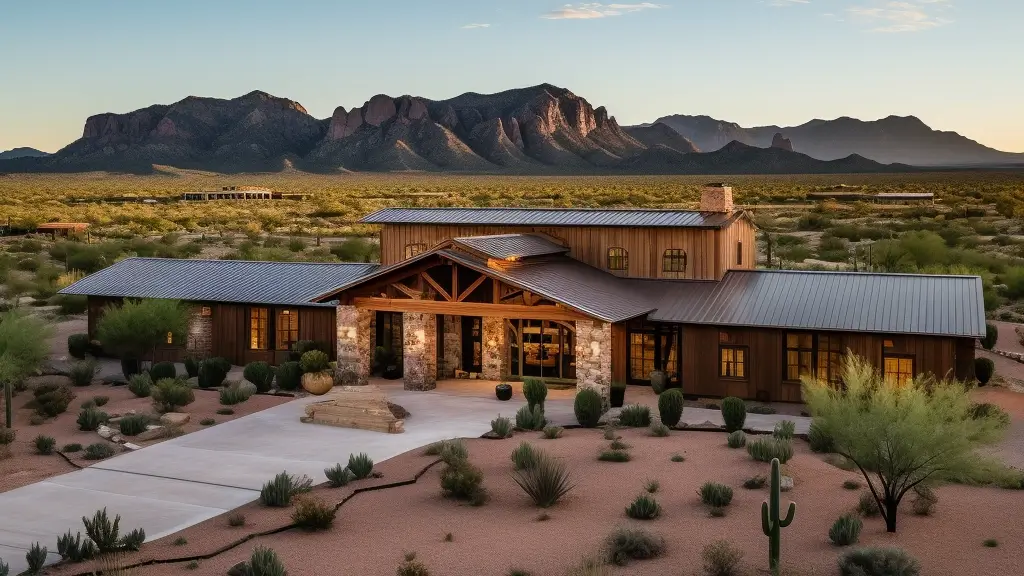Barndominiums Vs. Standard Houses: an In-depth Comparison of Way Of Life and Performance
The decision between barndominiums and typical homes incorporates different aspects, consisting of way of living choices and useful demands. Barndominiums are defined by their open formats and adaptability, typically appealing to those who focus on public living and adaptability.
Review of Barndominiums
Barndominiums, a novel real estate fad acquiring appeal throughout various areas, blend the rustic appeal of barn-style design with the performance of contemporary living rooms. These special frameworks generally contain a metal or timber framework, incorporating open flooring strategies and high ceilings with energy-efficient attributes. Frequently located on large country residential or commercial properties, barndominiums offer property owners the chance to take pleasure in a calm way of living while giving adequate room for various tasks.
The versatility of barndominiums extends beyond their aesthetic appeal; they can serve as both living quarters and functional spaces for pastimes, workshops, or also little organizations. Their adaptive layout allows for very easy customization, suiting varied household demands and preferences. Numerous owners appreciate the low maintenance demands associated with steel siding and roofing, adding to long-term toughness.

Qualities of Conventional Homes
Emphasizing classic layout and comfort, standard homes are defined by their unique building styles, which commonly mirror historical impacts and local aesthetic appeals. Typical features consist of symmetrical exteriors, gabled roofings, and a focus on workmanship, causing a warm and welcoming atmosphere.
Traditional homes frequently integrate aspects such as crown molding, wainscoting, and wood flooring, enhancing their timeless allure. They generally feature several spaces with defined functions, promoting family members communication while permitting privacy. learn more. The format typically consists of formal living and eating areas, which contribute to enjoyable guests and hosting family events
Exterior products such as block, wood, or stone are frequently used, adding to sturdiness and a sense of durability. Barndominium builder. Additionally, many typical homes are designed with front decks or stoops, cultivating a feeling of area and link with the area
Landscape design plays a substantial role in conventional home design, with properly maintained yards and pathways that boost visual charm - click here. Overall, standard homes personify a sense of fond memories and security, appealing to those that value heritage and a much more structured living setting
Price Contrast
Typically, an expense comparison in between barndominiums and typical homes discloses considerable differences in construction expenditures and total financial investment. Barndominiums, commonly built from steel or steel structures, typically sustain lower product and labor costs than traditional homes built from wood and block. The simplified design of barndominiums can equate to minimized construction times, additionally reducing labor expenses and speeding up tenancy.
Typically, the cost per square foot for a barndominium varies from $100 to $150, while traditional homes can differ commonly, usually falling in between $150 and $300 per square foot, relying on place, materials, and layout complexity. This expense difference makes barndominiums an attractive option for budget-conscious customers looking for bigger home without sacrificing high quality.
Additionally, barndominiums might lead to long-term cost savings via reduced maintenance prices, power performance, and insurance coverage rates. Their resilient building and construction products often need much less upkeep in time compared to typical homes. It is crucial to take into consideration that while initial expenses may be reduced for barndominiums, the final investment will also depend on individual modification and preferred facilities, which can influence the general expense in both real estate kinds.
Lifestyle and Room Factors To Consider
When taking into consideration way of living and area, barndominiums provide a special flexibility that interest a variety of property owners. These hybrid structures combine household coping with functional room, usually including open flooring strategies that can be adapted to fit private requirements. This versatility is specifically useful for households or people seeking a tailored living atmosphere, enabling for diverse uses such as office, workshops, or leisure locations.

In addition, the visual allure of barndominiums can accommodate both rustic and modern preferences, making them a versatile selection for various design preferences (Barndominium repair). Ultimately, the choice in between a barndominium and a typical home often depends upon exactly how well each option straightens with the house owner's way of living aspirations and spatial requirements, highlighting the value of taking into consideration personal priorities in the decision-making procedure
Ecological Influence and Sustainability
The ecological effect and sustainability of barndominiums existing engaging advantages contrasted to traditional homes. Mostly built from steel and various other long lasting materials, barndominiums are frequently developed making use of recycled resources, decreasing the demand for brand-new materials and decreasing waste. Their design generally highlights open rooms, which can result in lower power intake for home heating and air conditioning compared to typical homes with more segmented formats.
Furthermore, barndominiums can integrate sustainable features such as photovoltaic panels, rain harvesting systems, and progressed insulation techniques, enhancing their energy efficiency. The flexibility of their layout allows house owners to incorporate these technologies much more seamlessly than in lots of typical homes, which might require extensive retrofitting.
Furthermore, barndominiums usually need less resources for building additional reading because of their less complex, much more reliable styles. This not just lowers the carbon impact connected with building however likewise adds to a much more lasting lifestyle. In contrast, traditional homes may entail higher degrees of power expenditure and resource utilize throughout their lifecycle, from building to upkeep. Generally, barndominiums represent a forward-thinking strategy to lasting living, straightening with modern ecological top priorities.
Final Thought
In recap, the option in between barndominiums and standard homes hinges on private way of living choices and functional requirements. Barndominiums, with their open layouts and sustainable products, cater to those seeking versatility and communal living.